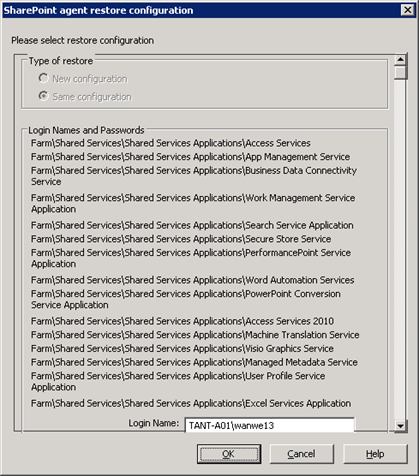

You can configure the restore settings using the Submit button on the Restore Manager.
The dialog SharePoint agent restore configuration dialog appears.
.
Lets you to keep the same restore Name and Location after restore or a different one.
Lets you to configure who can login to the Farm, Web Application, and SharePoint Service Provider. This credential information is always required to restore the data.
Lets you configure so that the name or location or both so that of one or more components will have new name or location after a backup job has been restored
Different components have different configuration items for name and location. The following table lists the components and their configuration items:
|
Component Type |
Configuration Item |
Comment |
|---|---|---|
|
Database
|
New database Server Name |
The SQL database server you want to restore the database to. It could be an alias name. |
|
New directory name |
The new physical path that stores the SQL database files. |
|
|
New database name |
The new name of the database after restore. |
|
|
UserProfileApplication |
New server name |
The new My Site address of UserProfileApplication after restore. |
|
Shared Search Index
|
New server name |
The computer name where the Office Search Index service is running. |
|
New directory name |
The new physical path where the index files are stored. |
|
|
Web Application
|
New web application URL |
The URL of the Web Application website |
|
New web application Name |
The new name of the web application that is displayed in IIS. |
|
Copyright © 2016 |
|